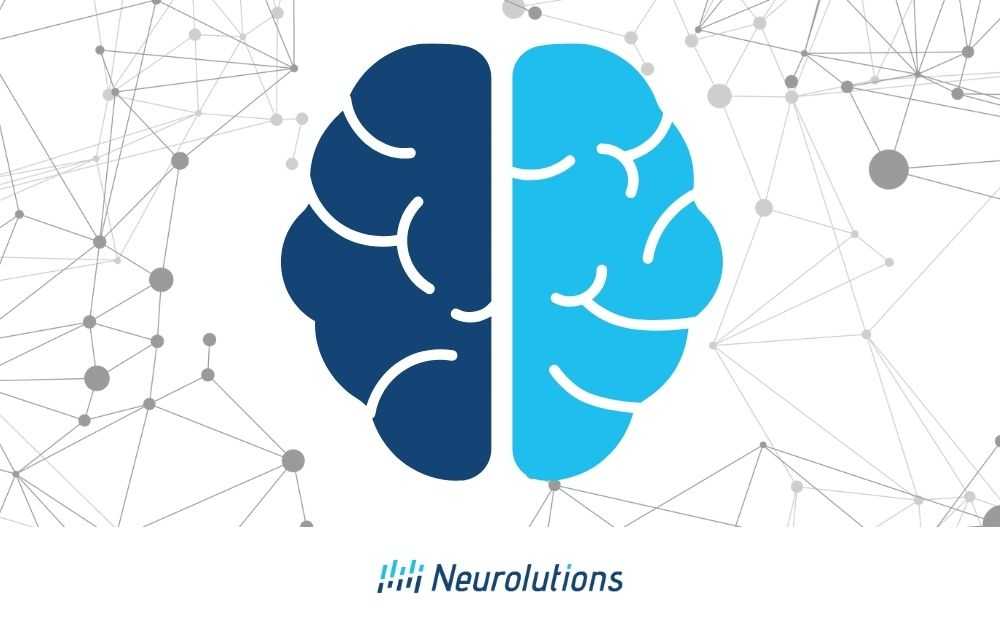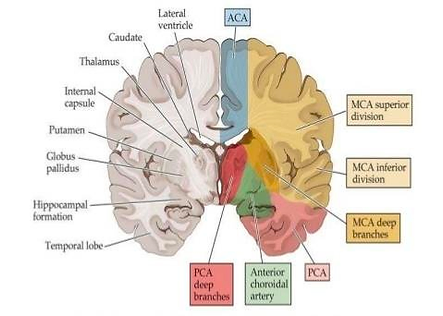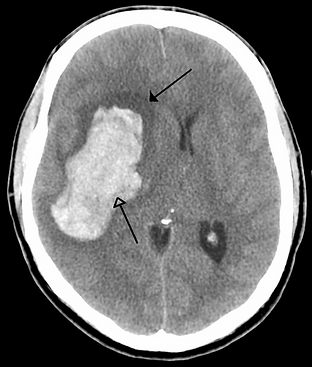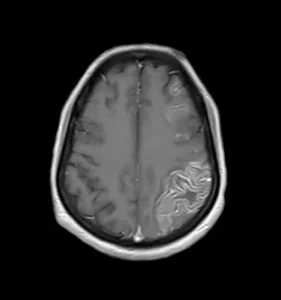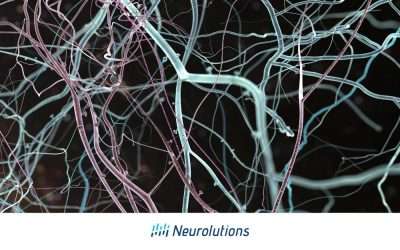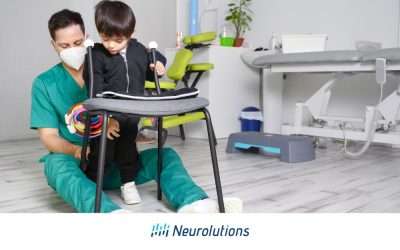Introduction: What are the Different Types of Stroke
Ischemic stroke and hemorrhagic stroke are the two types of stroke. All strokes are caused by a lack of blood supply to the brain, lead to tissue injury, and result in the death of vital cells of the brain known as neurons.
Strokes can occur on either the left or right side of the brain. The most common area of the brain where a stroke occurs is within the middle cerebral artery or MCA. Other common areas for stroke occur within the Anterior cerebral artery (ACA) or posterior cerebral artery (PCA).
Within the brain, strokes can bleed into the brain in the form of a hemorrhage (dark blood into the brain appearing on imaging) or appear as a white area of tissue death in the form of an ischemic stroke when appearing on imaging. Imaging used to determine the territory of stroke damage is determined by a CT (computerized axial tomography) scan or MRI (magnetic resonance imaging).
Please see the below images for a visual representation of each vascular territory of the brain and examples of a hemorrhage vs. an ischemic stroke.
Figure 1. Illustration of the major vascular territories and important anatomic structures of the brain. ACA stands for anterior cerebral artery; MCA stands for middle cerebral artery; PCA stands for posterior cerebral artery. (Image from Blumenfeld HJ. Neuroanatomy through clinical cases. Sunderland [MA]: Sinauer Associates; 2002:375.)
Figure 2. CT Scan of an intraparenchymal bleed (bottom arrow) with surrounding edema (top arrow) caused by a hemorrhagic stroke
Figure 3. MRI Scan of a subacute ischemic stroke. Case courtesy of Dr. Muhammad Khan, Radiopaedia.org, rID: 99099
What are the Differences Between the Left & Right Side Stroke?
When a stroke occurs on the left or right side of the brain, especially if it occurs in the midline cerebral or anterior cerebral artery, the results affect the contralateral (or opposite) side of the body to which side the stroke occurred. For example, if the stroke occurred in the middle cerebral artery on the left side of the brain, most likely the stroke survivor would experience greater involvement of the arm, face, and leg on the right side of the body, opposite of the left side of the brain which was impacted. This is very common to have unilateral (one-sided weakness) following a stroke.
|
The IpsiHand is the first FDA-cleared device leveraging brain-computer interface technology to assist chronic stroke patients in rehabilitation. Talk to a member of our team to see if the IpsiHand is right for you. |
 |
|---|
Common Deficits Associated with Stroke Occurring on the Middle Cerebral Artery
Common deficits associated with either side of the brain, left or right vascular territories when the stroke occurs on the middle cerebral artery:
Right Hemisphere damage possible impairments:
- Left-sided unilateral body or visual neglect
- Anosognosia (the inability to recognize your health problems)
- Visuospatial impairment
- Left unilateral (unilateral) motor impairment
- Contralateral numbness
Left Hemisphere damage possible impairments:
- Bilateral (both sides) motor apraxia (difficulty planning motor movements or the sequence of how to carry out a motor action)
- Broca’s aphasia (extreme difficulty forming words and sentences, and may speak with difficulty or not at all. The individual has a loss of language but not intelligence)
- Frustration
- Wernicke’s aphasia (difficulty understanding language)
- Right-sided contralateral numbness
Possible impairment when either the left or right side of the brain is affected:
- Contralateral hemiplegia of the face or upper extremity
- Contralateral one-sided sensory loss
- Visual field impairment
- Difficulty looking toward the contralateral gaze
- Ideational apraxia (inability to plan how to use an object correctly for a task)
- Lack of judgment
- Perseveration (inability to “let things go” or doing the same action over and over again)
- Impaired organizational behavior
- Depression
- Lability (easy to cry or mood changes)
- Apathy (decreased overall emotional involvement)
- Contralateral visual field deficits
- Behavioral abnormalities
- Bilateral visual field cuts
- Memory impairments
How Left & Right MCH Strokes can Affect Quality of Life
Specific treatment of your stroke depends on the type and location of the bleed or tissue damage, the severity of the clinical deficits, and neurological problems that appear after the stroke Your doctor and medical team will be able to inform you of where the stroke took place if imaging or a stroke work up was completed.
Your stroke may also be defined solely based on symptoms if imaging was not available at the time of your stroke. Based on the location of your stroke and the deficits which you are experiencing following the stroke, therapy will address specific deficits. For example, if the stroke was located on the left side of the brain causing right arm hemiparesis, your therapist will address right arm motor function through the use of various treatments, techniques, or technologies.
The ability to use your upper extremity may be affected by the following due to damage on the contralateral the other side of the brain:
- Pain
- Contracture or deformity
- Loss of motor control
- Weakness
- Orthopedic limitations
- Learned nonuse
- Loss of biomechanical alignment
- Inefficient or uncoordinated movement patterns
Any of the following changes post stoke affecting either the right or left side of the body can greatly decrease the ability to complete everyday meaningful activities and limit independence, but together with therapy and medical management, daily activities can become achievable through compensation or remediation of strength and limitations. Knowing the location and type of stroke can help guide treatment and efficacy of recovery.
This information highlights information related to patterns of impairments which are typically observed together based on strokes that occur in the areas of the middle, anterior, or posterior cerebral artery. A stroke survivor’s clinical appearance immediately after the stroke is typically the worst. However, once the stroke has stabilized, with no further medical or neurological effects, the survivor is likely to improve medically and functionally.
Many clinicians agree that addressing deficits as soon as possible helps restore function or treat deficits, right or left, contralateral or ipsilateral.
Reference:
Pedretti, Pendleton, Schultz-Krohn, Pedretti’s Occupational Therapy: Practice skills for Physical Dysfunction. Stl. Louis, MO Mosby/Elsevier, 2006.

